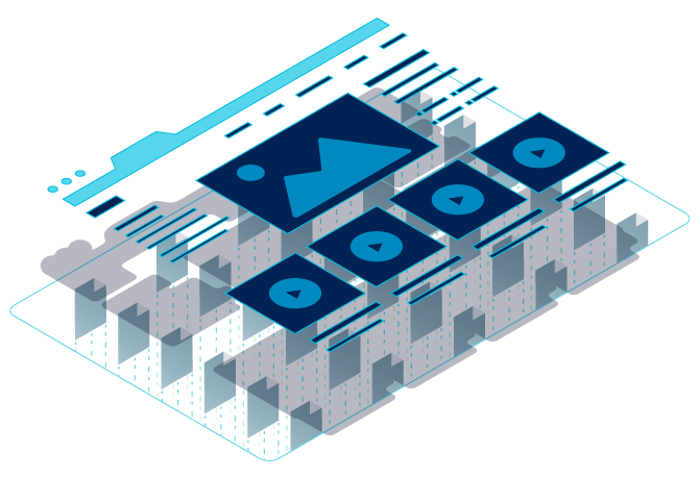Quick Guide to Choosing A Java CMS
Liza Leiss
2019-05-22
Whether leaning towards a Java CMS because it matches the current company tech stack, because of the high availability of developer talent, or the high reusability of code, the decision of which Java CMS is the right fit for your company requires input from multiple stakeholders.

The more departments that require a tool to do their jobs, the more requirements there are - which can lead to a long selection process.
While every business will have certain unique needs, in this guide we’ve outlined a few key requirements for developers, marketers, and the business as a whole that can be used to get a head start when evaluating Java CMS platforms.
Java CMS Features Key for Developers 💻
If you’re a developer searching for a Java CMS, you are most likely well aware of core benefits of the high reusable code that all Java CMS’s leverage. However, there are some key differences to evaluate to determine if a CMS is designed to let developers get the most out of Java.
1) Works with the Java tools You Prefer:
💡 You might already have technologies and environments you prefer to work with, such as Apache Maven, Spring MVC, Jenkens, Eclipse, IntelliJ IDEA, and many more. Double check that the CMS is already working with those technologies - or can quickly be made to do so.
2) Provides Content Modeling Capabilities:
💡 This characteristic is the building block of a Java CMS or CMS, in general. It should help you bring about structure in the type of content as well as help in establishing a relationship between the content.
3) Supports Templating:
💡 Your Java CMS must provide you with an option for templating. This would mean that, apart from defining the content, you would also be in charge of presenting it, appropriately. A single template would change the way all the content objects have been arranged.
4) Provides Search and Query Capabilities:
💡 This option has become extremely necessary given the need for dynamic content and must be an intrinsic part of the delivery component of this system. At the same time, it also provides you with the capability to easily interoperate with third-party providers.
5) Provides APIs for Manipulating Content:
💡 Having good APIs for content locking, versioning, publishing etc. is helpful when you want to write high quality and maintainable code.
6) Provides Flexibility:
💡 Having a content-driven CMS allows you to reuse content, eases search and enables easy maintenance. While on the other hand, a page-oriented CMS may be quicker to get going, it can also lead to failure in separation of content and presentation when reusing pages.
Java CMS Features Key for Marketers 🚀
The fastest CMS to develop with would still slow down business if it didn’t give marketers the right tools to act autonomously. It’s important to ensure your next CMS allows marketing teams to confidently control the creation and presentation of content, without needing to go through developers for every change.
1) Easy User Interface:
📌 Content creation, management, and publication must be intuitive for those without a technical background, or adoption of the tool will be minimal.
2) Smooth Workflow:
📌 When many editors and authors collaborate at once, it is especially important for enterprises to choose a Java CMS that is going to help you break down the process of content creation as well as review. In this way, the distributed tasks can be separately provided to different teams or group of users.
3) Content Preview:
📌 The ability to see how content looks before it goes live is crucial. As the customer experience goes beyond the traditional website, such as with mobile sites and Single Page Applications (SPAs), a CMS should allow marketers to preview content in any unique setups your company designs.
4) Easy Publishing:
📌 Marketers should be able to edit and publish content with no need of IT intervention. Depending on the needs of your marketing teams, features for versioning, giving publishing permissions, and scheduling publication may also be critical requirements.
Java CMS Features Key for Business Speed 🏎️
Along with the above features that help individual teams move fast, a Java CMS needs to bring high return on investment to the business as a whole. Businesses need to be able to get to market quickly, and adapt to that market as it changes.
1) Open Integration:
📈 A Java CMS when developed on open requirements supplies the versatility for easy integration to external software and platforms.
That's why a CMS should also have the functionality to integrate with Marketing Automation, Enterprise Content Management, and eCommerce platforms - and be able to use the connected data to personalize the customer experience
2) Nimble Enterprise Stack:
📈 You must choose a Java CMS that runs on-premise, in the cloud or provides a hybrid solution. A lightweight and open source Java stack provides you with three important qualities: high uptime, security, and performance.
A Vendor that Works With You 🤝
No two companies content needs are identical, and when evaluating your next Java CMS it’s important to know how the vendor will partner with you to meet unique needs.
Bringing some of your custom needs into the selection process and workshopping with the vendor on how the CMS would be able to support those needs is a great way to determine if the Java CMS - and the Java CMS provider - is the right fit for your business.

